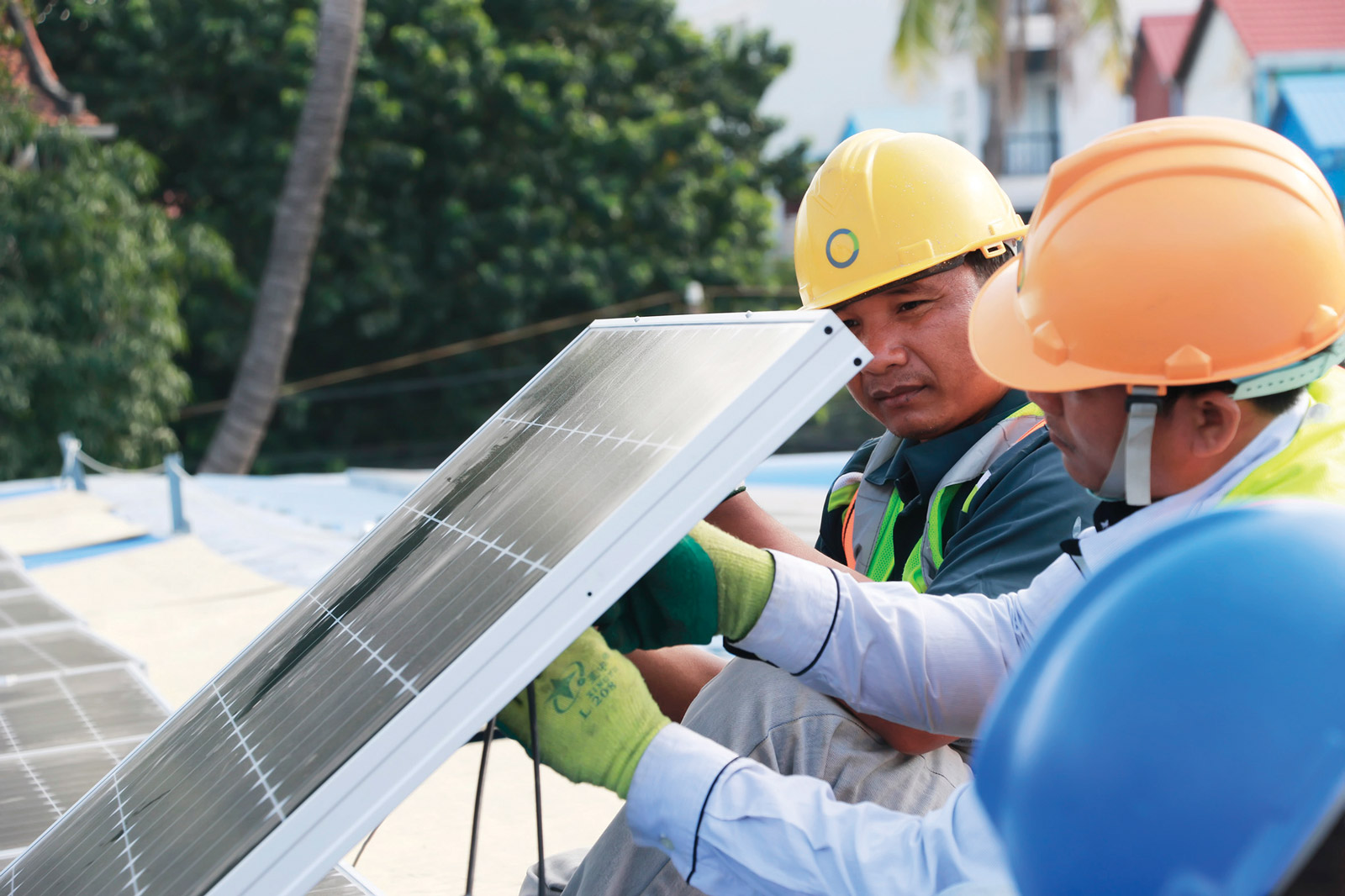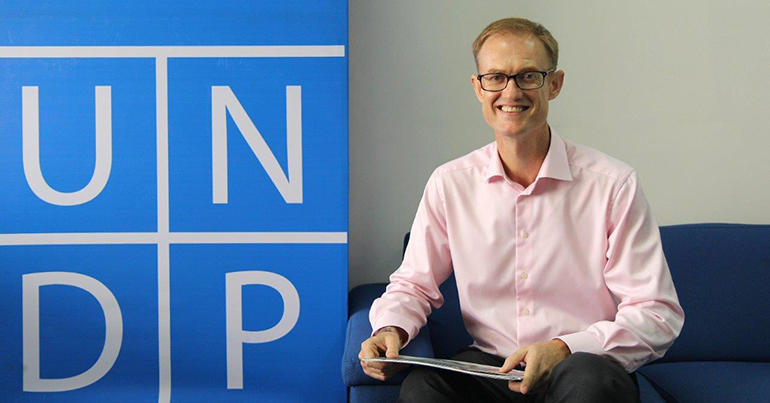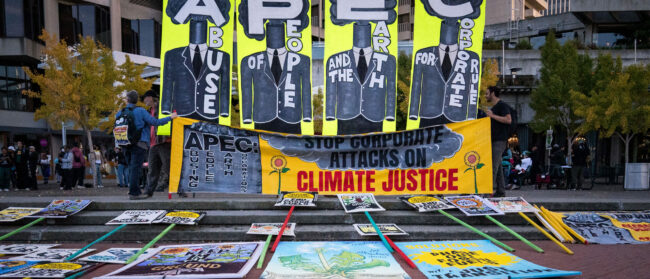The Kingdom’s electricity demand has been increasing year-on-year since 2010 as rapid development in the country continues, with last year’s growth around 15%. Today, more people in and out of the major cities rely on having access to electricity. The government is taking steps to meet that need and to reduce reliance on electricity imports from neighbouring countries.
The government had set the goal of electrifying all villages in the country by 2020, and this year increased the target of households connected to the national grid from 70% to 95% by 2030, according to the Basic Energy Plan report prepared by Cambodia’s General Department of Energy and supported by the Economic Research Institute for ASEAN and East Asia.
Plans for a new 700-megawatt coal-fired power station were approved in 2018 and it will be the third in the country, facts which suggest that the government still views coal and hydropower as the two primary sources in electrical supply, with most non-hydro renewable energy projects at nascent stages.
Recent investments and advances in technology indicate that Cambodia may look to tap into its substantial renewable energy potential in the coming decades, but without a clear course of action or specific targets, progress is hampered.
In an opinion piece, Veng Visal, a senior energy research analyst at the ASEAN Centre for Energy, noted that it was “quite an achievement” for Cambodia to have electrified 68% of the country’s total population – up from 36% in 2013 – but warned that “even with that number, there is still a long way to go.”
Hydroelectric power
Hydroelectric power production was almost 50 times greater in 2016 than it was in 2011, according to the Basic Energy Plan report. However, it still only amounts to 13% of the potential total amount, leaving open the possibility of further developments.
The Lower Sesan II is the country’s newest hydropower plant, beginning operations in 2018. The 6.5km-long dam is the longest in Asia and will produce 1.9 billion kWh per year, boosting the country’s electricity production by 20%, according to local newspaper the Phnom Penh Post.
In April of this year, Prime Minister Hun Sen approved plans for a new hydroelectric dam in Pursat province. It will be capable of producing 80MW of electricity and will cost over $231m, local paper the Khmer Times reported.
Although hydropower is a clean energy, concerns have been raised by environmental and human rights groups about its potential harm to the ecosystem of the Mekong River and the communities that depend on it for their livelihoods.
There’s lots of scope to build up on solar – we’ve got very high-quality iridescence here and cheaper land than our neighbours
Solar
Cambodia benefits from consistent sunshine year round, making it perfectly suited to solar power production. A 2016 Mekong Strategic Partners report estimated that the country has the potential to generate 700MW of electricity through solar power.
Nick Beresford, country director of the United Nations Development Programme (UNDP) in Cambodia, believes that the country has a great opportunity to explore solar power.
“There’s lots of scope to build up on solar – we’ve got very high-quality iridescence here and cheaper land than our neighbours,” he said.
Currently, solar power projects are contributing to less than 1% to the energy mix in Cambodia, but there are plans in place to expand on that.
A 60MW solar-panel plant in Kampong Speu province went live in April this year, four months ahead of schedule. It sits in addition to a 10MW solar plant that is already connected to the grid.
Following the activation of the Kampong Speu plant, the prime minister signed off on energy management specialists Schnei Tech’s plans to build two 60MW solar plants in Kampong Chhnang and Pursat.
One potentially fruitful innovation in solar is off-grid solutions. Cambodian-based company Okra Solar has created the technology for micro-grids, wherein houses can pool and share energy produced by solar panels among themselves, resulting in greater access to cheap energy.
The technology is currently active in just over 100 households, according to the company’s co-founder Afnan Hannan, who believes off-grid solutions can be massively beneficial for Cambodia.
“First, off-grid solutions can be deployed immediately to give people access to energy for modern needs and to kickstart their economic development through power,” Hannan says.
“Secondly, where the government decides it’s not feasible or cost effective to extend the grid, such as to isolated communities, islands and sparsely populated areas, off-grid solutions can serve as an option to step in and plug the gap.”
Wind
Wind power has been widely overlooked in the past in Cambodia, but renewable independent power producer The Blue Circle has its sights set on harnessing this resource in the Kingdom.
According to a feasibility study carried out by the company, Cambodia has the potential to generate up to 500MW of wind power per year. To put that in context, it’s roughly half as much as a nuclear power station generates.
The advantage of wind power, aside from being a clean source of energy, is that stations can be built in a much quicker time than hydro or coal. With Cambodia’s electricity demand ever-increasing, this could prove useful.
On top of this, wind power is complementary to hydropower and solar power. For example, during the dry season when hydropower is less plentiful, wind power can make up the difference. The same can be said with solar, whose energy production is naturally ineffective at nighttime.
Challenges
There are still many challenges facing Cambodia and its possible adoption of renewable energies, especially non-hydro renewables.
UNDP’s Beresford highlighted difficulties with regulations. For example, feed-in tariffs are not permitted in Cambodia – these are small payments made to households or businesses who generate their own clean electricity and feed it into the grid. There are also strict regulations on rooftop solar panels. But Beresford is optimistic that this can change.
“There are lots of good possibilities for changing these restrictions and allowing private sector firms to come in, and it will still be beneficial for [state utility company] Electricité du Cambodge,” he said.
Visal noted that in order for Cambodia to make progress developing renewable energy sources, clear plans must be made: “A renewable energy roadmap should also be developed to lay a concrete foundation to support further development and encourage private sector investment.”



